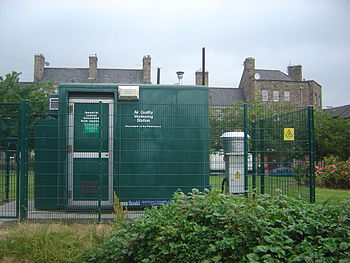Delhi Wakes Up to an Air Pollution Problem It Cannot Ignore (Gardiner Harris, New York Times, Feb. 14, 2015)
Also discussed here:
Mr. President, World’s Worst Air Is Taking 6 Hours Off Your Life (Natalie Obiko Pearson, Bloomberg, Jan. 26, 2015)
Today we review several articles about the state of air pollution in
Delhi, India which is 15 times higher (153 micrograms per cubic meter) than the maximum level recommended by the
World Health Organization. Not only is the air pollution poorer in Delhi than in
Beijing but it is monitored at only 4 locations compared to more than 30 in Beijing. President Obama’s exposure to Delhi’s pollution (average 76 to 84 micrograms per cubic meter) during his recent 3 day visit may have reduced his life expectancy by 6 hours.
 Key Quotes:
Key Quotes:
“Delhi has the world’s highest levels of PM2.5 -- tiny, toxic particles that lead to respiratory diseases, lung cancer and heart attacks. The
Indian capital averaged 153 micrograms per cubic meter in 2013, the World Health Organization said in May, citing government data. That’s 15 times more than the average annual exposure recommended by the WHO.”
“India as a whole is home to 11 of the top 20 cities on the planet with the worst air quality, according to data from the WHO, which collected pollution levels from 1,600 metropolitan areas between 2008 to 2013”
“Already, an estimated 1.5 million people die annually in India, about one-sixth of all Indian deaths, as a result of both outdoor and the indoor air pollution, a problem caused in part by the widespread use of cow dung as cooking fuel. The country has the world’s highest death rate from chronic respiratory diseases, and more deaths from asthma than any other nation, according to the World Health Organization. Air pollution also contributes to both chronic and acute heart disease, the leading cause of death in India."
“One microlife represents 30 minutes of an average young adult s expected lifespan. The average person uses up about 48 microlives per day but lifestyle affects how fast one expends one s microlives. Settling in smoggy Beijing will use up roughly an additional 2-3 microlives per day, implying a reduction in life expectancy of almost three years. Living in
Hong Kong or
Santiago, Chile, will cost one additional microlife per day, whereas daily life in New Delhi, one of the world s most polluted cities, costs an estimated 4-5 microlives.”
“Dung Obama’s three-day visit, PM2.5 levels in Delhi have averaged between 76 to 84 micrograms per cubic meter…Those levels translate roughly into an estimated loss of 2 hours a day in life expectancy, said David Spiegelhalter.. “That’s roughly 8 cigarettes a day”
“Beijing has more than 30 government monitors tracking its air quality, although the historical data is not widely available. Delhi has just four, in addition to one at the U.S. embassy”
















































